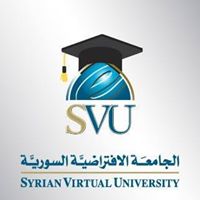Subscribe to the gold package and get unlimited access to Shamra Academy
Register a new userGenerative Art Using Neural Visual Grammars and Dual Encoders
75
0
0.0
(
0
)
Added by
Chrisantha Fernando Dr
Publication date
2021
fields
Informatics Engineering
and research's language is
English
Ask ChatGPT about the research

No Arabic abstract
Whilst there are perhaps only a few scientific methods, there seem to be almost as many artistic methods as there are artists. Artistic processes appear to inhabit the highest order of open-endedness. To begin to understand some of the processes of art making it is helpful to try to automate them even partially. In this paper, a novel algorithm for producing generative art is described which allows a user to input a text string, and which in a creative response to this string, outputs an image which interprets that string. It does so by evolving images using a hierarchical neural Lindenmeyer system, and evaluating these images along the way using an image text dual encoder trained on billions of images and their associated text from the internet. In doing so we have access to and control over an instance of an artistic process, allowing analysis of which aspects of the artistic process become the task of the algorithm, and which elements remain the responsibility of the artist.
rate research
Read More
There are two classes of generative art approaches: neural, where a deep model is trained to generate samples from a data distribution, and symbolic or algorithmic, where an artist designs the primary parameters and an autonomous system generates samples within these constraints. In this work, we propose a new hybrid genre: neuro-symbolic generative art. As a preliminary study, we train a generative deep neural network on samples from the symbolic approach. We demonstrate through human studies that subjects find the final artifacts and the creation process using our neuro-symbolic approach to be more creative than the symbolic approach 61% and 82% of the time respectively.
With rapid progress in artificial intelligence (AI), popularity of generative art has grown substantially. From creating paintings to generating novel art styles, AI based generative art has showcased a variety of applications. However, there has been little focus concerning the ethical impacts of AI based generative art. In this work, we investigate biases in the generative art AI pipeline right from those that can originate due to improper problem formulation to those related to algorithm design. Viewing from the lens of art history, we discuss the socio-cultural impacts of these biases. Leveraging causal models, we highlight how current methods fall short in modeling the process of art creation and thus contribute to various types of biases. We illustrate the same through case studies, in particular those related to style transfer. To the best of our knowledge, this is the first extensive analysis that investigates biases in the generative art AI pipeline from the perspective of art history. We hope our work sparks interdisciplinary discussions related to accountability of generative art.
Existing deep models for code tend to be trained on syntactic program representations. We present an alternative, called Neural Attribute Grammars, that exposes the semantics of the target language to the training procedure using an attribute grammar. During training, our model learns to replicate the relationship between the syntactic rules used to construct a program, and the semantic attributes (for example, symbol tables) constructed from the context in which the rules are fired. We implement the approach as a system for conditional generation of Java programs modulo eleven natural requirements. Our experiments show that the system generates constraint-abiding programs with significantly higher frequency than a baseline model trained on syntactic program representations, and also in terms of generation accuracy.
This paper proposes a way to understand neural network artworks as juxtapositions of natural image cues. It is hypothesized that images with unusual combinations of realistic visual cues are interesting, and, neural models trained to model natural images are well-suited to creating interesting images. Art using neural models produces new images similar to those of natural images, but with weird and intriguing variations. This analysis is applied to neural art based on Generative Adversarial Networks, image stylization, Deep Dreams, and Perception Engines.
Visual sensation and perception refers to the process of sensing, organizing, identifying, and interpreting visual information in environmental awareness and understanding. Computational models inspired by visual perception have the characteristics of complexity and diversity, as they come from many subjects such as cognition science, information science, and artificial intelligence. In this paper, visual perception computational models oriented deep learning are investigated from the biological visual mechanism and computational vision theory systematically. Then, some points of view about the prospects of the visual perception computational models are presented. Finally, this paper also summarizes the current challenges of visual perception and predicts its future development trends. Through this survey, it will provide a comprehensive reference for research in this direction.
suggested questions
Log in to be able to interact and post comments
comments
Fetching comments


Sign in to be able to follow your search criteria


